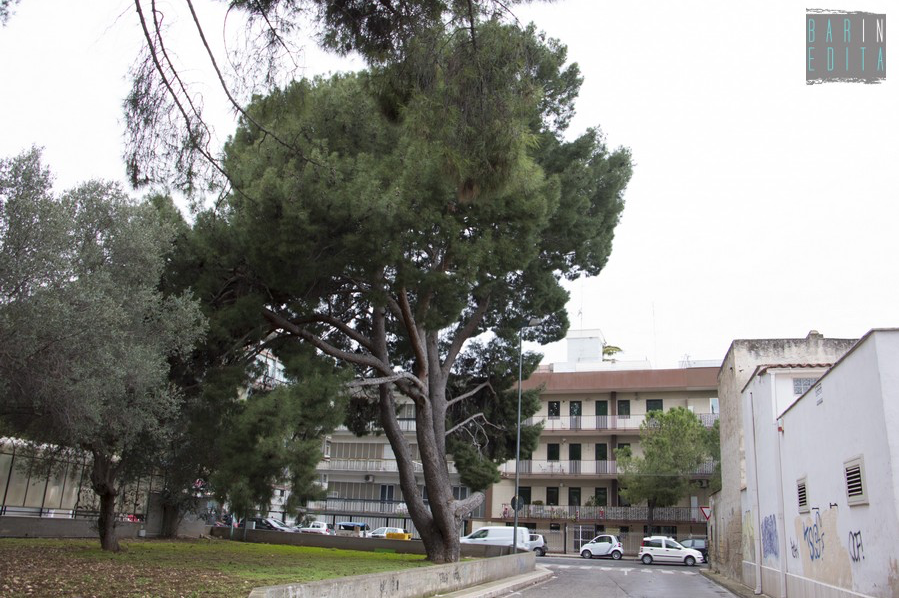
Carrassi Pine
This post is also available in:
 Italiano (Italian)
Italiano (Italian)
The pine tree in the Carrassi district is an Italian “Monumental tree”, due to its impressive size and its age: a true natural asset to be thoroughly protected.
With its 19-ft circumference and soaring up to almost 43 ft, this wondrous specimen is about 150 years old and grows on Corso De Gasperi, at the intersection with Via La Malfa: right there, there’s actually a small piece of land enclosed within concrete walls, which hosts the tree and its magnificent foliage. The large trunk is divided into three imposing sections which almost reach the roofs of the nearby buildings with their thick and deep green needles.
Pinus pinea
-biology and ecology
The stone pine (Pinus pinea L.) is a 33-82-ft tall tree, with horizontal or ascending branches that give its adult foliage a typical umbrella shape.
This species mainly grows in single-tree woods and is naturally renewed by its own seed. Pines of this type can be found within the thermo- and meso-Mediterranean climatic zones and in several areas featuring hot and dry summers (up to 5-month droughts), as well as rainy and mild winters (with an average temperature of 32 F° in the coldest month and 23-32 inches rainfall per year).
It is a heliophilic species that thrives when exposed to the sun, preferring acidic or neutral sandy soils; still, it can tolerate slightly calcareous substrates.
-distribution
The stone pine has a mosaic distribution around the northern and eastern Mediterranean, from Portugal to Syria, as well as along some coastal areas of the Black Sea.
It can be found from the sea level up to 1.640-1.968 ft in the northern Mediterranean area and up to 2.624-4.593 ft in eastern Mediterranean countries.
– importance and use
This species has a heavy and very resinous wood with reddish-yellow heartwood and large white-pink sapwood.
Although it has been cultivated for construction timber since the ancient Roman times, its most important product is the seed: the pine nut (hence the Latin name “pinea”).
The main countries where pine nuts are traditionally marketed are Spain, Portugal, Italy, Tunisia, and Turkey.
Other products of economic value are its resin, the bark (for the extraction of tannin), and the empty pine cones (used as fuel).
The Pinus pinea is currently also widely cultivated around the Mediterranean Sea for protection purposes: it is used to consolidate coastal dunes, preserve the soil and safeguard coastal crops.
The Italian stone pine is an ornamental tree widely used in parks and gardens around the world.
In Italy, it represents a traditional element of the landscape (hence one of its common names “Italian stone pine”).
This post is also available in:
 Italiano (Italian)
Italiano (Italian)
Contatti
Quartiere Carrassi - Bari(BA)
